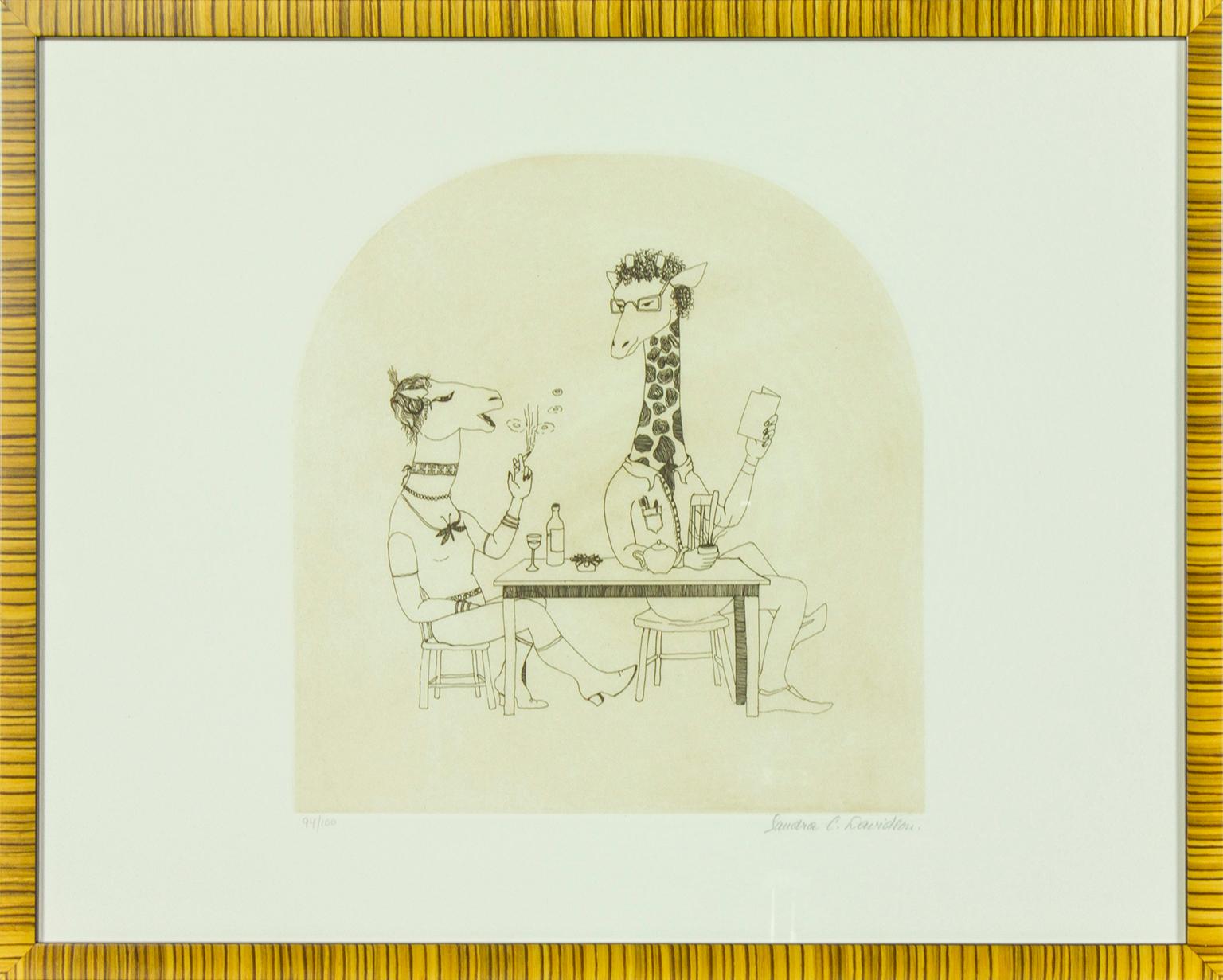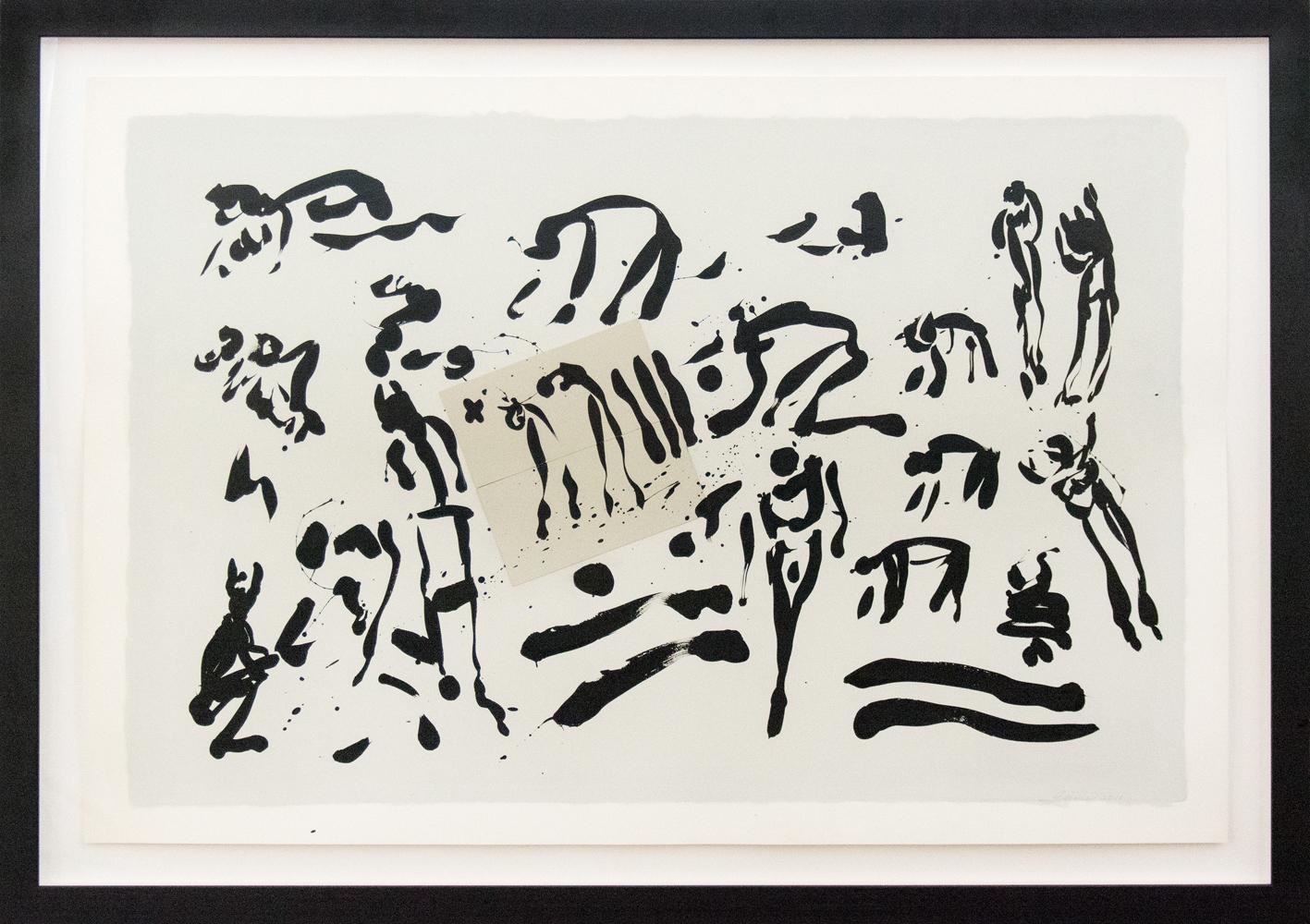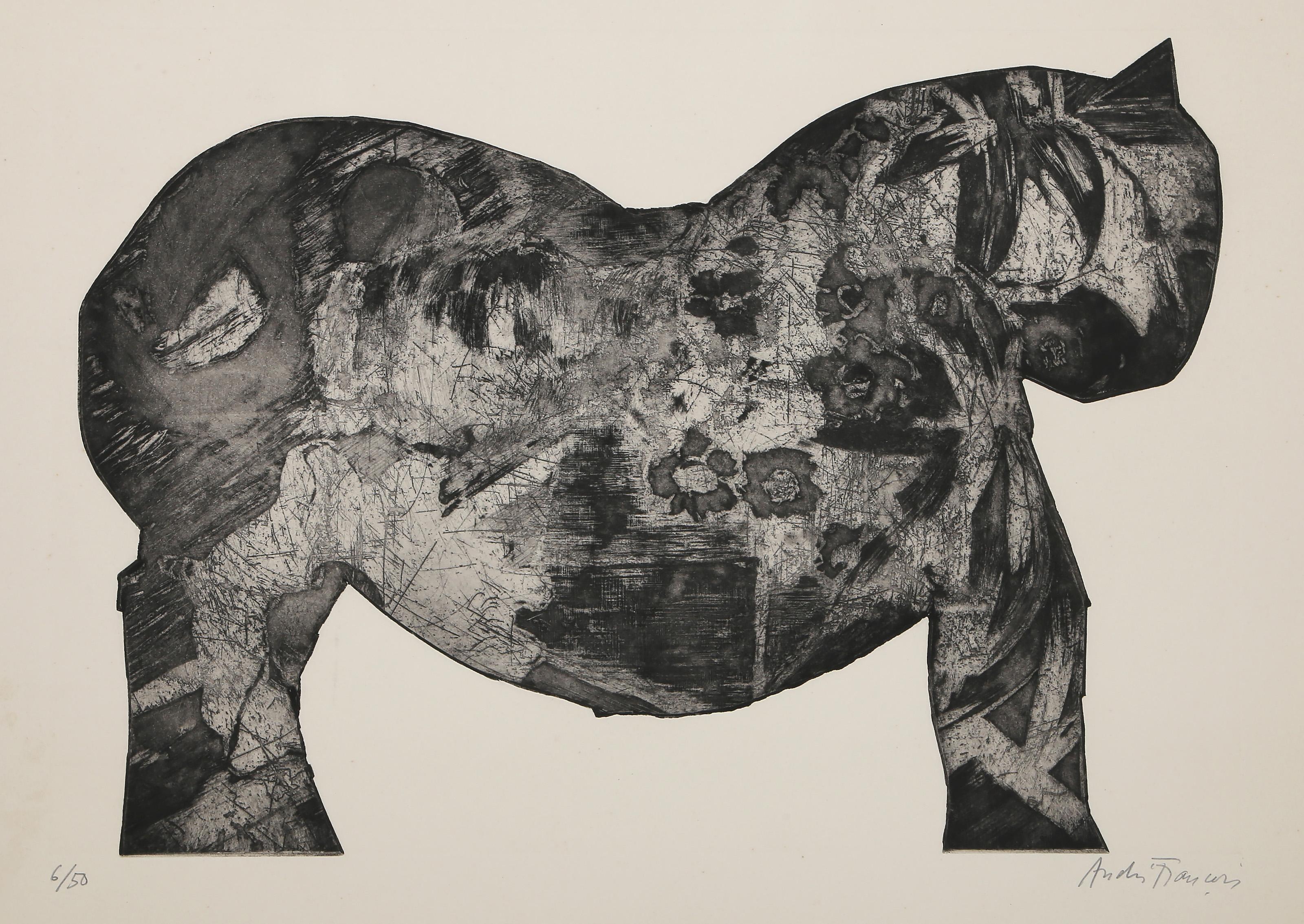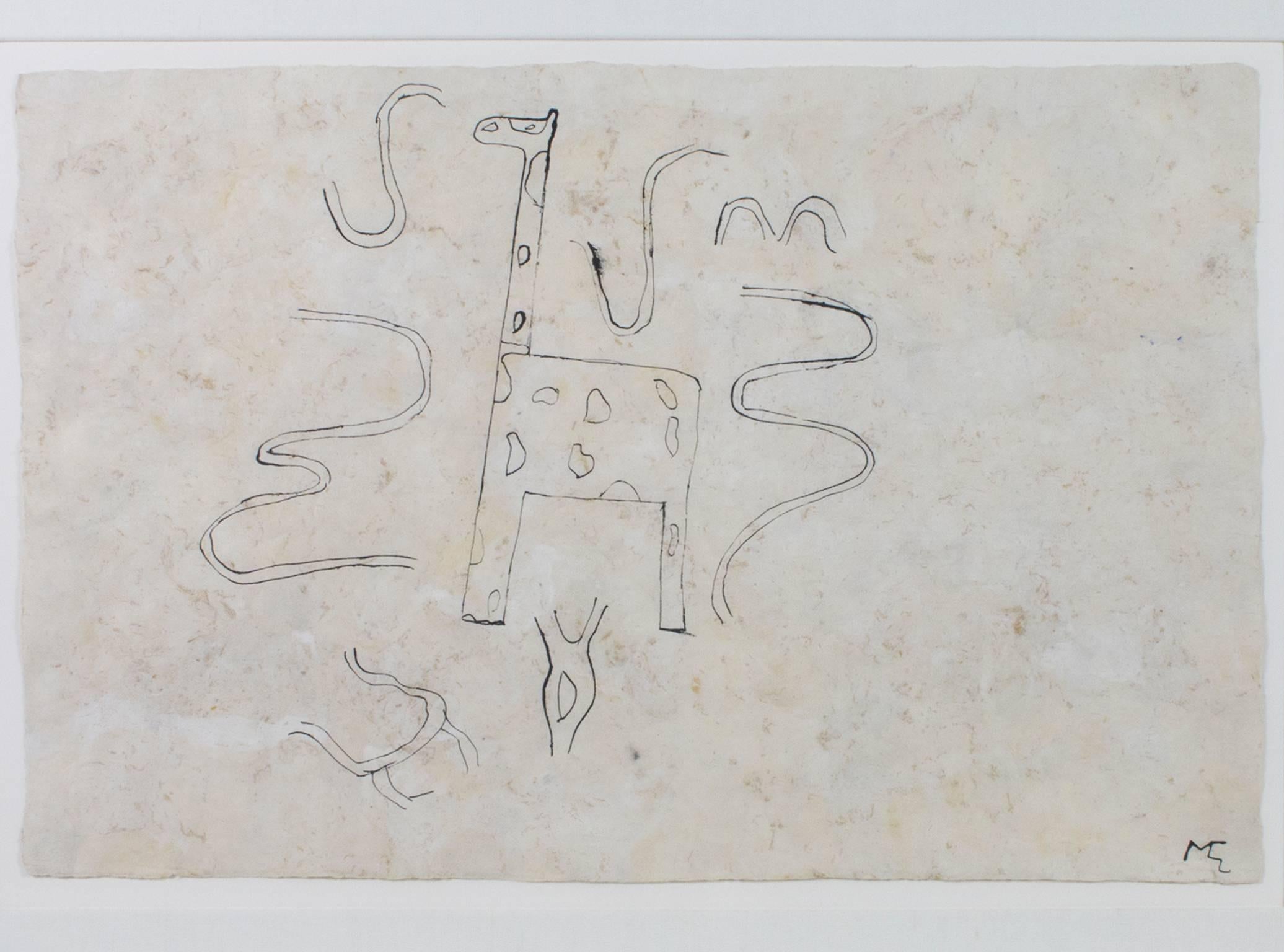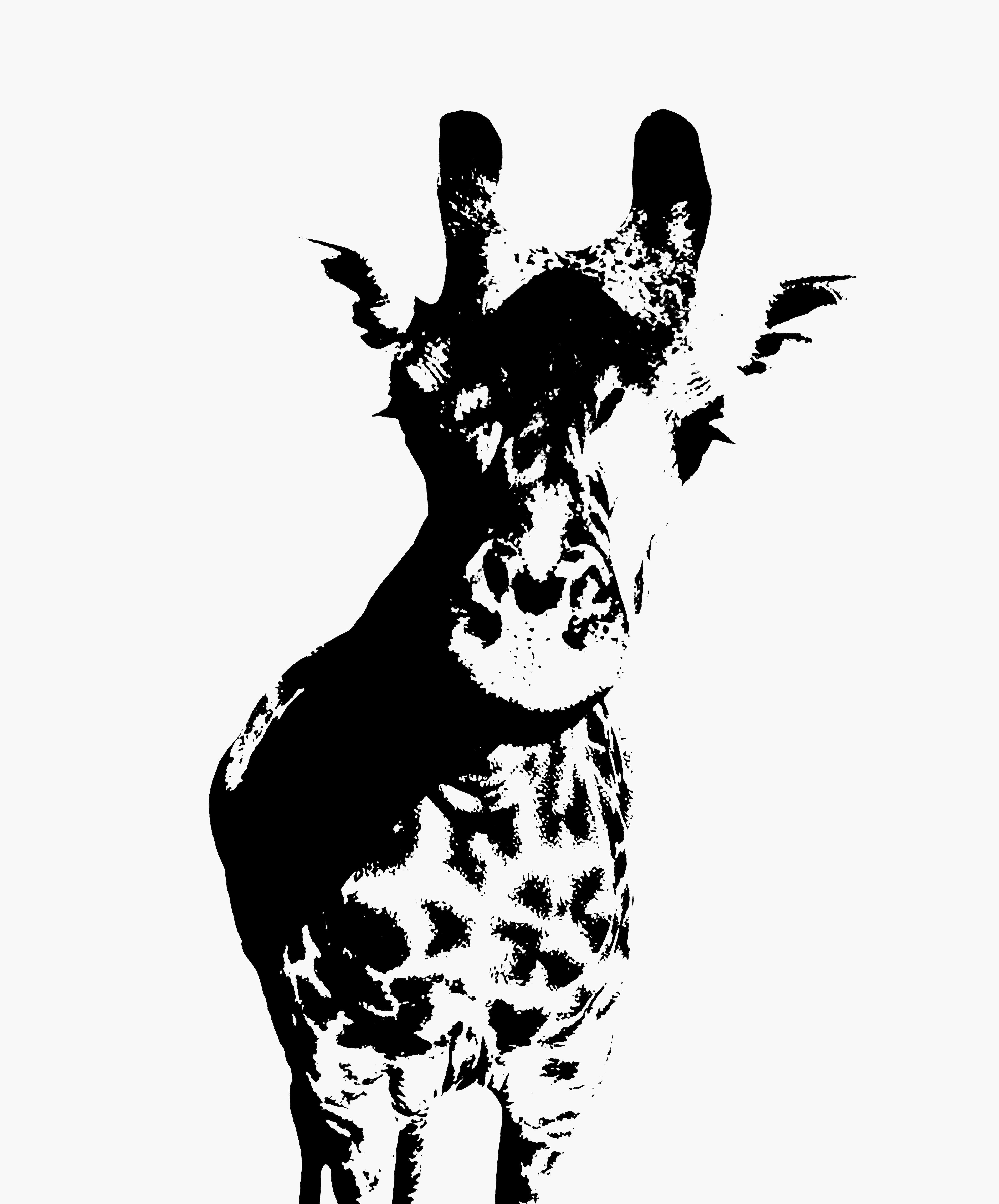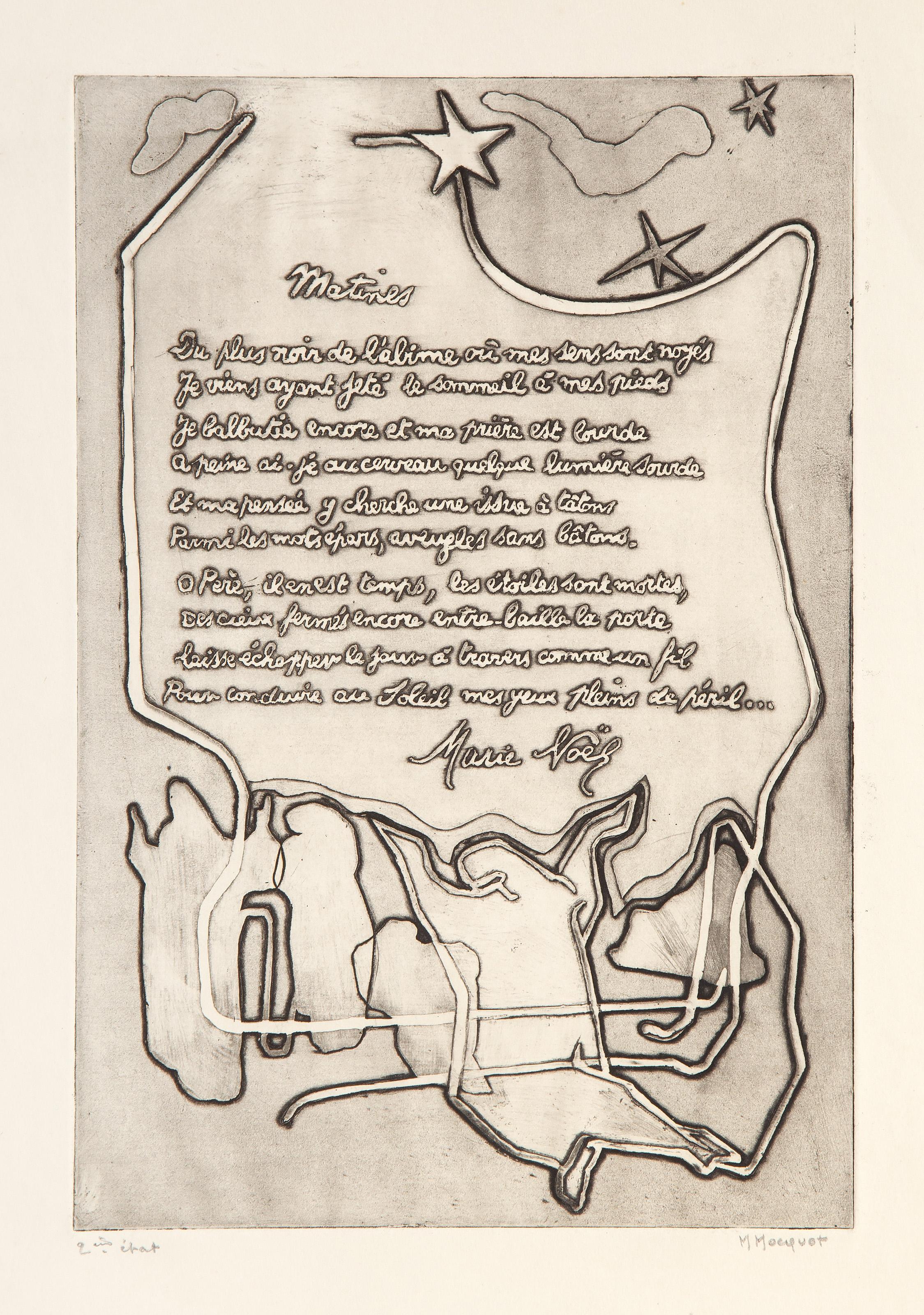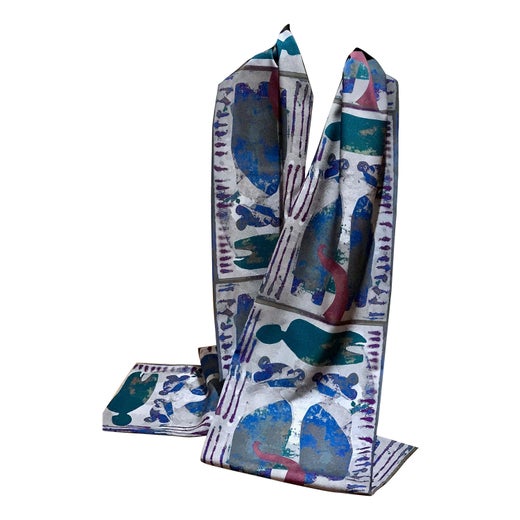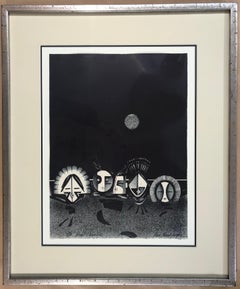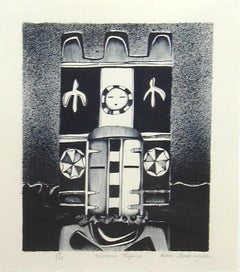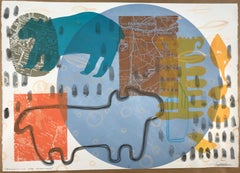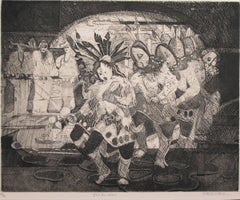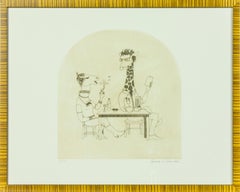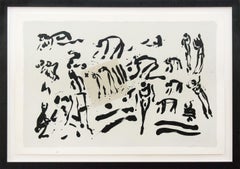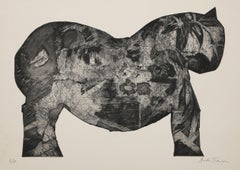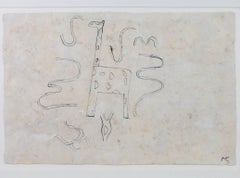Items Similar to Learning French, Melanie Yazzie lithograph black white giraffes French language
Want more images or videos?
Request additional images or videos from the seller
1 of 8
Melanie YazzieLearning French, Melanie Yazzie lithograph black white giraffes French language
Price Upon Request
Price Upon Request
Price Upon Request
Price Upon Request
Price Upon Request
Price Upon Request
Price Upon Request
Price Upon Request
Price Upon Request
Price Upon Request
About the Item
Learning French, Melanie Yazzie lithograph black white giraffes French language
As a printmaker, painter, and sculptor, my work draws upon my rich Diné (Navajo) heritage. The work I make attempts to follows the Diné dictum “walk in beauty” literally, creating beauty and harmony. As an artist, I work to serve as an agent of change by encouraging others to learn about social, cultural, and political phenomena shaping the contemporary lives of Native peoples in the United States and beyond. My work incorporates both personal experiences as well as the events and symbols from Dine culture. My early work focused on depictions of the harsh realities of Native peoples (i.e., racism, identity conflict, poverty, abuse, etc.) to bring to Native issues to the forefront, but more recently I have been making work with a positive twist. Due to personal health issues and trying to live a calmer life style, I have been focusing on quiet and balance. I believe my work is reflecting this shift. The work is also informed and shaped by personal experiences and tries to tell many stories about things both real and imagined. Melanie Yazzie exhibits internationally and has is represented exclusively by our gallery 1995. She is a Professor and Head of Printmaking in the Department of Art and Art History at University of Colorado, Boulder, Colorado.
- Creator:Melanie Yazzie (1966, American)
- Dimensions:Height: 28 in (71.12 cm)Width: 21 in (53.34 cm)
- Medium:
- Movement & Style:
- Period:
- Condition:
- Gallery Location:Santa Fe, NM
- Reference Number:1stDibs: LU19123494091
Melanie Yazzie
Melanie Yazzie is an American sculptor, painter and printmaker, born in 1966, in Ganado, Arizona. She first studied art at the Westtown School in Pennsylvania. She has received a BA degree in studio art with a minor in Spanish from Arizona State University, in 1990 and an MFA degree in printmaking from the University of Colorado, at Boulder, in 1993.
About the Seller
4.9
Vetted Professional Seller
Every seller passes strict standards for authenticity and reliability
Established in 1966
1stDibs seller since 2015
101 sales on 1stDibs
Typical response time: 1 hour
- ShippingRetrieving quote...Shipping from: Santa Fe, NM
- Return Policy
Authenticity Guarantee
In the unlikely event there’s an issue with an item’s authenticity, contact us within 1 year for a full refund. DetailsMoney-Back Guarantee
If your item is not as described, is damaged in transit, or does not arrive, contact us within 7 days for a full refund. Details24-Hour Cancellation
You have a 24-hour grace period in which to reconsider your purchase, with no questions asked.Vetted Professional Sellers
Our world-class sellers must adhere to strict standards for service and quality, maintaining the integrity of our listings.Price-Match Guarantee
If you find that a seller listed the same item for a lower price elsewhere, we’ll match it.Trusted Global Delivery
Our best-in-class carrier network provides specialized shipping options worldwide, including custom delivery.More From This Seller
View AllNight Chanters, black and white framed lithograph, kachina, limited edition
By Dan Namingha
Located in Santa Fe, NM
Night Chanters, black and white framed lithograph, kachina, limited edition 100
The Gallery Wall, Inc. now doing business as Glenn Green Galleri...
Category
1980s Contemporary Abstract Prints
Materials
Lithograph
Hemis Figure by Dan Namingha Hopi kachina katsina black and white lithograph ed
By Dan Namingha
Located in Santa Fe, NM
Hemis Figure by Dan Namingha Hopi kachina katsina black and white lithograph ed
unframed hand pulled at Tamarind Institute limited edition lithograph
Glenn Green Galleries also p...
Category
1970s Contemporary Abstract Prints
Materials
Lithograph
Protecting the Dreamers, monotype, screen print, bear, dog, bird, maps, signed
By Melanie Yazzie
Located in Santa Fe, NM
Protecting the Dreamers, monotype, screen print, bear, dog, bird, maps, signed
unique mixed media work on paper by Melanie Yazzie
As a printmaker, painter, and sculptor, my work dra...
Category
2010s Contemporary Animal Drawings and Watercolors
Materials
Charcoal, Gouache, Monotype, Screen
Yei Bi Chei, etching, Navajo ceremony, black, white
By Grey Cohoe
Located in Santa Fe, NM
black and white etching on paper
unframed
#14/30
image size 12 x 14.5
signed, titled & numbered by the artist under the image on the front.
COHOE, Grey 1944-1991
PERSONAL: Born 1944, in Tocito, NM; died November 2, 1991. Education: Attended Institute of American Indian Arts, 1966-67, College of Santa Fe, 1967, Fort Lewis College, 1968, and Haystack Mountain...
Category
1980s Contemporary Figurative Prints
Materials
Etching
Mana (Girl), Hopi Kachina lithograph by Dan Namingha black and white
By Dan Namingha
Located in Santa Fe, NM
Mana (Girl), Hopi Kachina lithograph by Dan Namingha black and white
hand pulled color lithograph
signed and numbered by the artist
unframed
Category
1980s Contemporary Figurative Prints
Materials
Lithograph
Mana (Girl), Hopi Kachina lithograph by Dan Namingha black and white
By Dan Namingha
Located in Santa Fe, NM
Mana (Girl), Hopi Kachina lithograph by Dan Namingha black and white
limited edition lithograph signed and numbered by the artist
Category
1970s Contemporary Abstract Prints
Materials
Lithograph
You May Also Like
"Untitled (Giraffes)" lithograph by Sandra Calder Davidson. Hand signed.
By Sandra Calder Davidson
Located in Boca Raton, FL
"Untitled (Giraffes)" lithograph by artist and children's book author Sandra Calder Davidson. Hand numbered 94/100 in front lower left corner. H...
Category
21st Century and Contemporary Contemporary Animal Prints
Materials
Lithograph
Antonia's Line (for Marleen Gorris) - black & white, abstract, ink on paper
By Lynne Fernie
Located in Bloomfield, ON
Antonia's Line, named after the Dutch film written and directed by Marleen Gorris. The film has been described as a "feminist fairy tale." It tells the story of the independent Anton...
Category
2010s Contemporary Figurative Drawings and Watercolors
Materials
Latex, Ink
Cheval Noir, Modern Etching and Aquatint by Andre Francois
By André François
Located in Long Island City, NY
Andre Francois, Hungarian (1915 - 2005) - Cheval Noir, Year: circa 1960, Medium: Etching and Aquatint on Arches, signed and numbered in pencil, Edition: 6/50, Image Size: 15.5 x ...
Category
1960s Modern Animal Prints
Materials
Aquatint, Etching
"Giraffe, " Ink on handmade Amate paper initialed by Miguel Castro Leñero
By Miguel Castro Leñero
Located in Milwaukee, WI
"Giraffe" is an original ink drawing on handmade Amate paper initialed by the artist Miguel-Castro Lenero in the lower right. The drawing depicts a giraffe surrounded by snake-like f...
Category
1990s Animal Drawings and Watercolors
Materials
Ink, Handmade Paper
Giraffe - In Black & White, Hand Printed Work, Screen
By Richard Scudder
Located in Yardley, PA
Richard Scudder, Giraffe - In Black & White. Hand Signed And Numbered By The Artist. Black & White Serigraph
:: Hand Printed Work :: Modern :: This piece comes with an official ce...
Category
2010s Modern Prints and Multiples
Materials
Screen
Matines (B&W), Modern Etching by Magdeleine Mocquot
Located in Long Island City, NY
Magdeleine Mocquot (1910 - 1991) - Matines (B&W), Year: 1950, Medium: Etching with aquatint, signed and numbered in pencil, Image Size: 11.25 x 7.75 inches, Size: 15.75 x 11.25 in....
Category
1950s Modern Prints and Multiples
Materials
Etching, Aquatint
